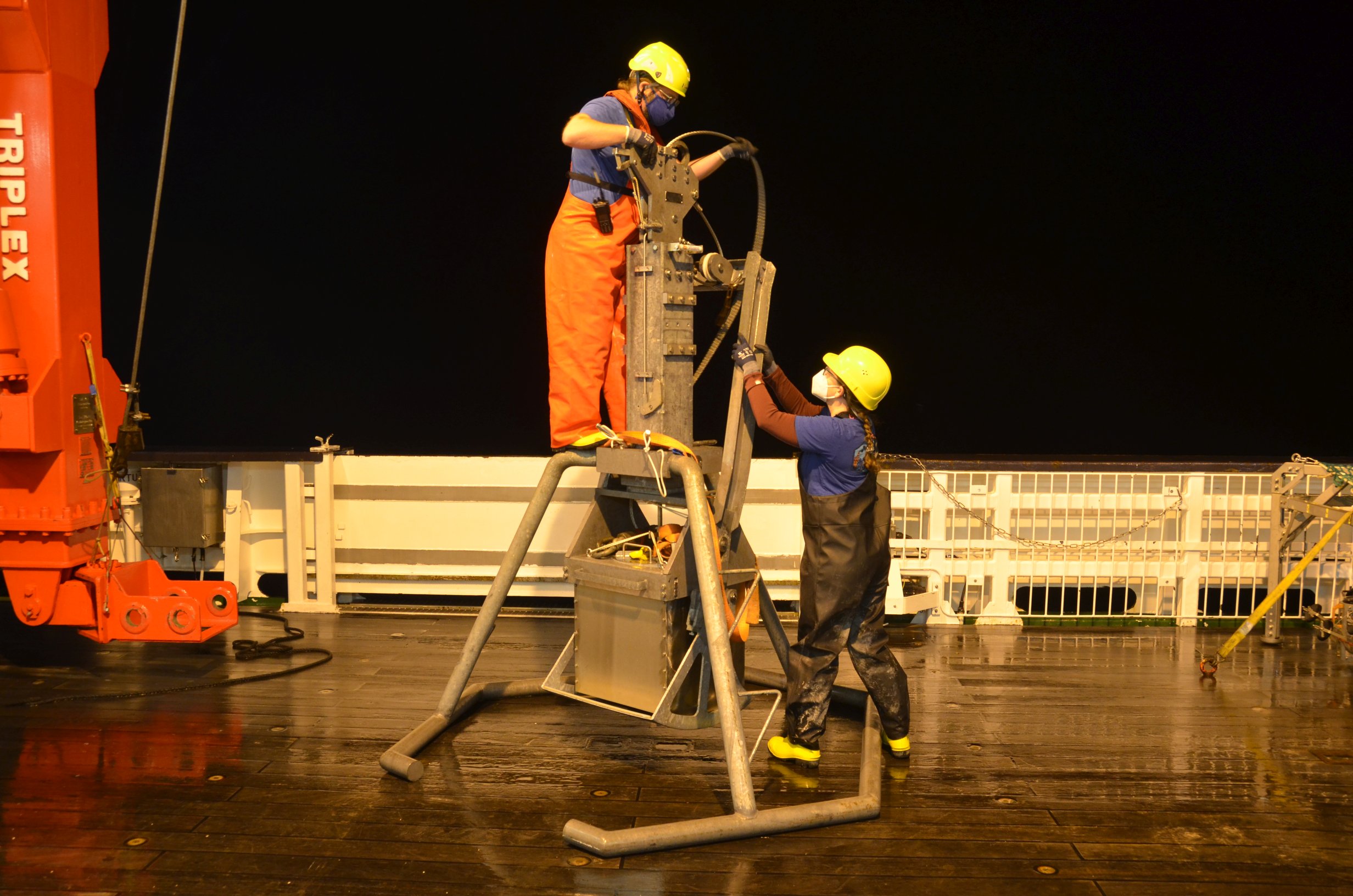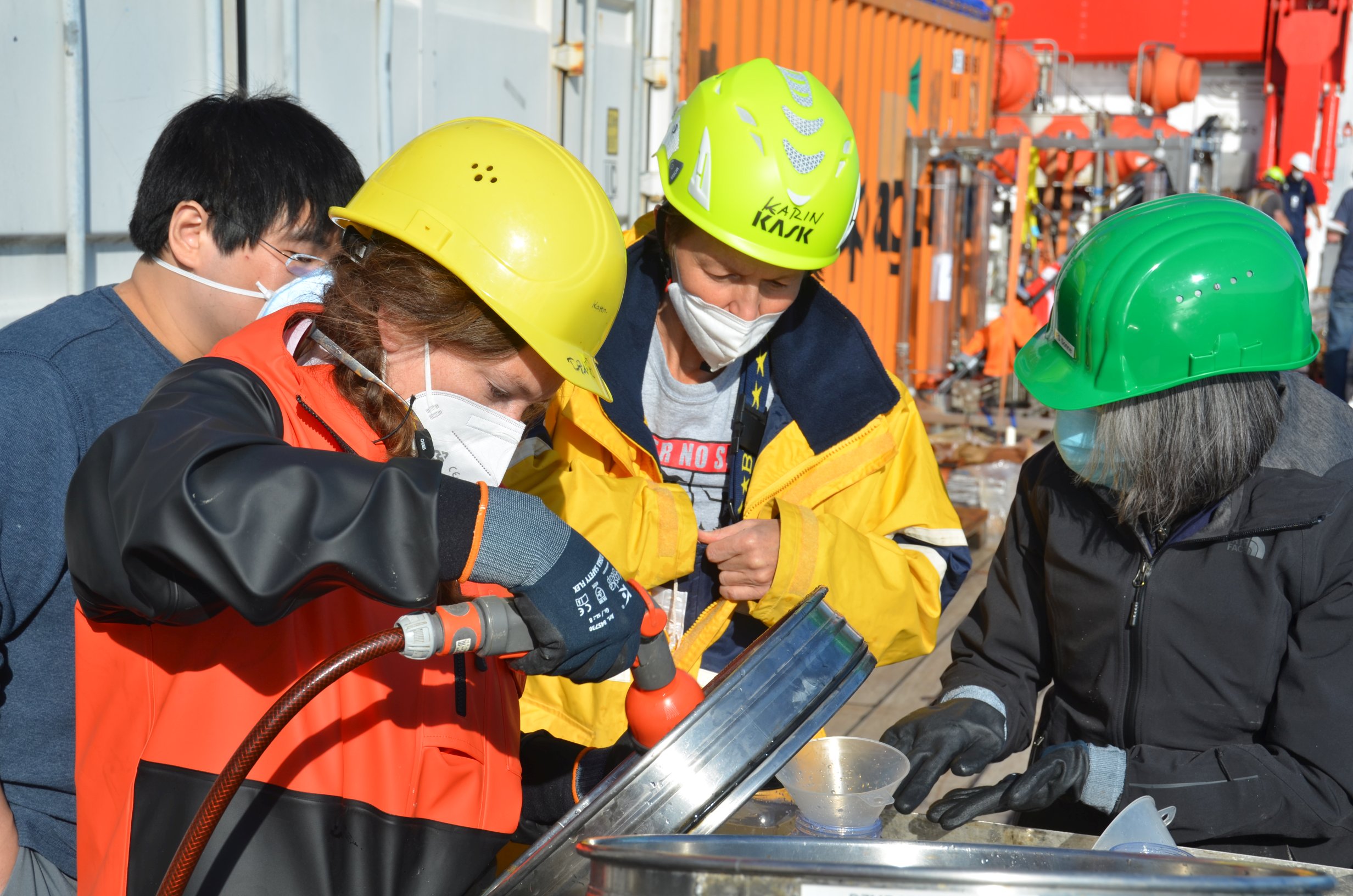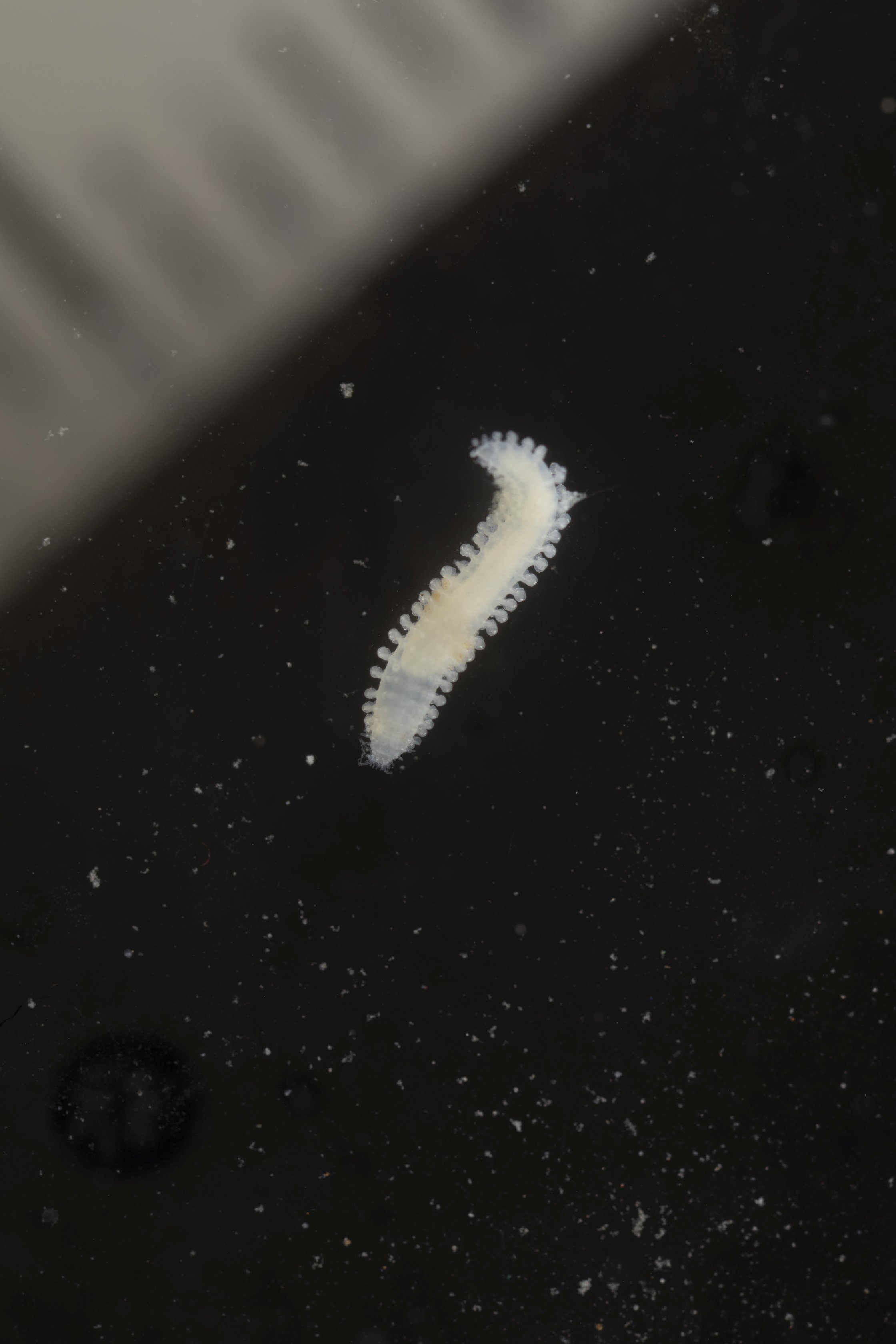Wonderful world of worms!
51° 37‘ N | 170° 28′ W
After leaving the Bering Sea, we have arrived near the Aleutian Trench for our deeper sites (4.000 to 7.200 m)!
Hi, my name is Candace Grimes, and I am a postdoctoral researcher from the University of North Carolina at Wilmington, USA. I am aboard the RV Sonne for the AleutBio Expedition to investigate an amazingly diverse phylum, Annelida also known as segmented worms. What I find most interesting about deep-sea worms is the variety of feeding strategies and morphology that they portray. Check out some of the worms we have found so far below!
Lucky for me, worms can be collected with almost every piece of equipment onboard. Whether it be the Agassiz trawl, the box corer, multiple corer, or multinet, worms might be present because they are one of the most morphologically diverse and abundant animals at these depths. Sometimes, it is difficult to distinguish what animal we have collected and assign it a name especially in deep ocean areas such as the Aleutian Trench because so few animals from this area are known. Many times when animals are collected from these regions, they are labelled “unknown worm” which emphasizes the need for research cruises such as ours. Characterizing animals in this way does not allow us to accurately describe the diversity of an area. To help solve these problems, the primary goal of the AleutBio Expedition is to characterize invertebrate biodiversity and connectivity between the Pacific and the Arctic Oceans.
What is fascinating about worms, aside from their surprisingly diverse physical traits, is the different strategies with which they survive and thrive in these difficult ecosystems. For example, worms can be carnivorous predators with large jaws or they can live within sediment tubes and form mucus nets to capture suspended food particles in the water column. Alternatively, they can be deposit feeders and found burrowing through the sediments consuming food particles as they move. The diversity of worm life in the deep sea is an awesome topic and I look forward to sharing it with everyone I can!
Wormly,
Candace J. Grimes, Ph.D
University of North Carolina at Wilmington





